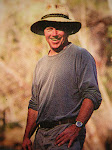 |
| Tree stands atop tip-up mound |
The most enduring effects of the storm will be in the forests. Unlike areas that felt the full hurricane, the strongest winds in North-central Florida were sporadic and only caused pockets of damage. Some of these pockets were large. Much of Gainesville, for instance, had significant wind damage, while other parts of Alachua County felt breezes no stronger than a summer storm.
Damage along our local rivers is spotty as well. Large stretches of Suwannee, Withlacoochee and Ocklawaha appear untouched, while other stretches are littered with isolated fallen trees. Parts of the Ocklawaha and St. Johns river forests had entire stands of mature trees pushed over.
 |
| Together they stood, together they fell |
To those of our fellow humans who like their nature controlled and their forests tidy, these storm-ravaged forests seem like nature’s train wrecks; tragic scenes of destruction. But here again, we are viewing nature with civilization-tinted glasses (I hear they sit heavy on the nose).
Walk through a storm-ravaged forest with a naturalist and you’ll learn that extensive areas of damage are not considered “destruction.” Ecologists call them “natural disturbances.” Where one kind of habitat (mature, closed canopy forest, for instance) is eliminated, another (sunny glade) is created. In newly opened forest clearings, seedlings can thrive that had little chance of surviving in the shade of a standing forest.
 |
| Clearing opened by Irma allows sun-loving plants to thrive |
On a smaller scale, each individual fallen tree creates new habitats, new opportunities for certain species to thrive. The pit created by an uprooted tree—called “tree throw”—creates a divot in the ground that will become a small, ephemeral pool after rains. These isolated pools are ideal for certain animals to breed and feed. Another new feature created by the fallen tree is the “tip-up mound” of roots and soil that are hoisted above the ground. Tip-up mounds (which can stand over 10 feet high if it was a big tree) create another habitat altogether. In large, flat swamps that have few bits of exposed ground, tip-up mounds become valuable islands where small plants can thrive. These, in turn, will offer food, shelter and breeding sites for to birds and other creatures. In short, the fallen tree will enhance the biodiversity of the area.
These descriptions are superficial and hardly do justice to the complex (and fascinating) ecology of disturbances and succession in natural systems. But hopeful it’s enough to give you a sense of appreciation for the “disturbances” we will be seeing in North Florida’s forests and along our rivers for years to come. With time, you’ll realize these disturbances and new, sunny glades are ideal places to aim your binoculars as you paddle past.
 |
| Fallen trees pave the way to the forest's future |

3 comments:
I very much enjoyed this article. I have seen first-hand the "disturbance" caused by the Irma winds. Alas, it also holds a positive outcome for our waterways and woodlands. Keep up the great work!
Having survived Hurricane Andrew it was good to be reminded of the beauty that can lie in natural rhythms of "destruction": Grass flats renewed, aquafers recharged, Yankees sent packin'. Here in Longwood many of the beautiful old oaks thundered to the ground, the Wekiva River has only recently been unblocked. Perhaps, it is only us who are out of synch, building our homes of straw and mud filling every place with more and more us.
Live wild paddle free.
Queequeg
Thank you very much, Anonymous and Queequeg, for reading my posts and for the nice compliments
Post a Comment